Microsystems for Life Science
Special designed microsystems can be used in many scientific applications in Life Sciences, e.g. in modern fields of biomedicine, biology and biotechnology to miniaturize assays in order to reduce the sample volume, to manipulate reactants in a tightly controlled environment or to perform in vitro experiments of biological processes.
At the IMT we develop microfluidic systems for applications in the field of micro analytics (lab-on-chip), cell culturing (organ-on-chip), biosensing using bio-functionalization of technical surfaces, for staining arrays displaying many different molecules and for the synthesis of biomolecules. The main advantages of these microsystems are the possibility to use very small amounts of (bio)chemical substances or samples and to enable a high parallelization of biological and biomedical experiments (high throughput screening).
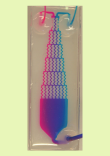
Channel-based or digital microfluidic systems allow the handling of small amounts of fluids or gases and can be used for many technical applications in the fields of (bio-) analytical or (bio-) technological devices, micro actuators, process technology etc. We focus on the fabrication of polymer-based microfluidic systems (design, mold fabrication, replication and assembly technology).
Microfluidics (R. Ahrens)
Microfluidics Analysis (J. J. Brandner)
Microfluidics (A. Guber)
Drag Reduction (H. Hölscher)

Porous scaffolds based on different polymers enable in vivo-like cell culture by mimicking tissue properties such as elasticity. Our research focus on studying tumor biology including drug responsiveness and immune suppression. We establish adjustable 3D systems, which can be combined with classical microfluidic devices as well as with imaging techniques.
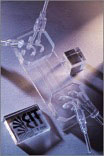
Cell-on-Chip or Organ-on-Chip-systems can be implemented by cultivating living cells inside of microfluidic devices. This allows the realization of chip systems for stem-cell research, artificial blood vessels for tumor research and the investigation of the blood-brain barrier.
Cell-on-Chip or Organ-on-Chip (R. Ahrens)
Cell-on-Chip or Organ-on-Chip (A. Guber)
Ex vivo and in vitro NMR (J. G. Korvink)

Specific analyte detection is an ongoing task in life science. We develop biosensors and lab-on-a-chip devices for analytical applications. This includes electrochemical biosensors for online monitoring in water treatment and healthcare settings, such as hospitals, as well as optical and acoustic biosensors for diagnostic applications, food analysis, and cell culture monitoring. A particular focus is set on the underlying surface functionalization.
Biosensing (K. Länge)
Array-Based-Biosensing (A. Nesterov-Müller)
Novel Detection Methods (M. Rapp)
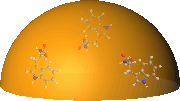
We develop different combinatorial synthesis methods which are based on the patterning amino acids embedded in a solid polymer matrix.
Peptide Arrays (F. Breitling)
Molecular Search Engines (A. Nesterov-Müller)
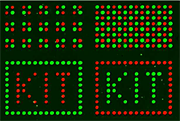
We use high content peptide arrays to read out the human immune system. Hereby, our novel technique enables measuring immunosignatures of patient’s sera up to epitope level.
Peptide Arrays (F. Breitling)
Molecular Search Engines (A. Nesterov-Müller)
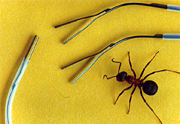
Bio-Micro Electro Mechanical Systems (BioMEMS) can be used in many fields of biological, biotechnological and biomedical applications. Typical examples are analytical systems for point-of-care diagnostics, drug-delivery systems, catheter-based devices, stent-based systems etc. BioMEMS technology can also be used for the realization of micro- and nanostructured surfaces for implants.
BioMEMS (R. Ahrens)
Bio-Price (V. Badilita)
BioMEMS (A. Guber)
Bio-Price (N. MacKinnon)

Innovation in materials has always spurred significant advances in MEMS. Current research focusses on the development of new materials for MEMS including chemically inert fluorinated polymers, photocurable thermoplastic materials (PMMA, PS) as well as photocurable glass precursors. These materials are optimized for use in additive manufacturing and rapid prototyping and are optimized for the fast and convenient optimization of prototypes as well as for industrial applications using replication processes.
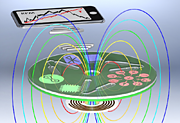
Conventional Lab-on-a-Disc applications are based on a purely passive spinning system. Through the transfer of electrical energy onto the spinning disc, the usage of a microcontroller and data transfer becomes possible. This paradigm shift allows a much more direct and hence simpler control of the processes in centrifugal microfluidics.
Microsensor Applications (J. J. Brandner)
Lab-on-a-Disc for MR (J. G. Korvink)
Electrified Lab-on-a-Disc (D. Mager)

Conventional fire alarm sensors are restricted by design to detect smoke or temperature. Both are detectable only when fire has already started. Contrary, monitoring the smell in a room can not only serve to control and optimize indoor air quality, but also to detect starting fire at early stage. This can be used to launch appropriate actions for fire suppression as well as to obtain valuable information about the scorching or burning material.

